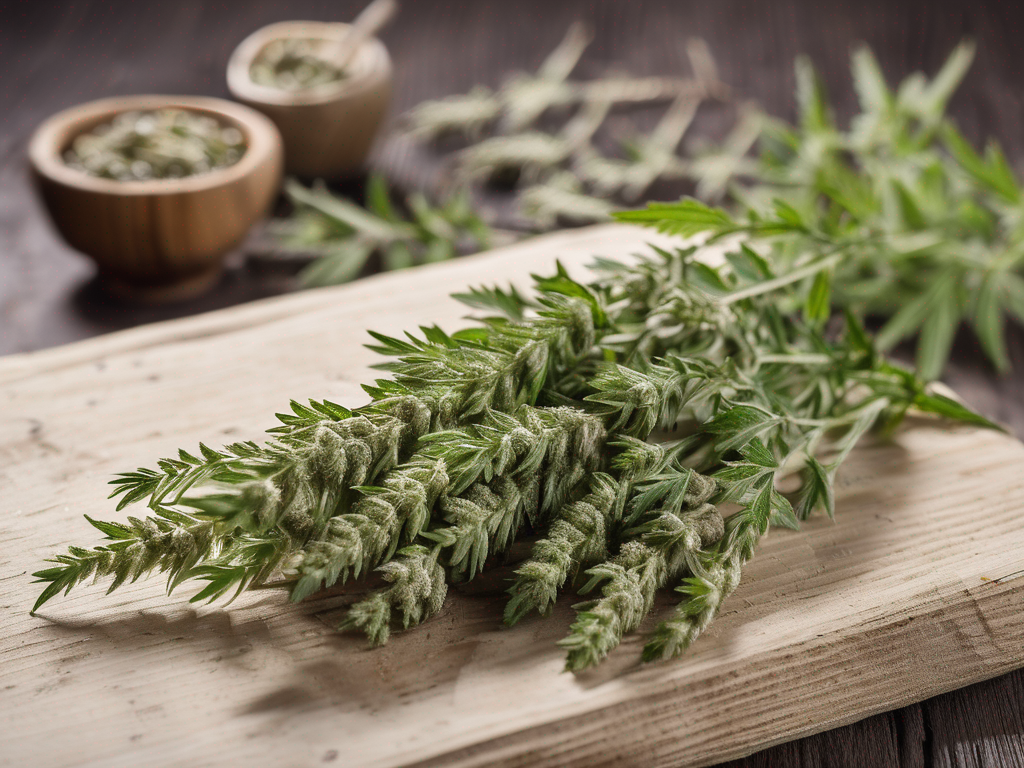
Signs that Mugwort has Gone Bad and Proper Storage Tips
Get Your Free Food Safety Cheat Sheet
30 most common foods with instant answers. Print it and stick it on your fridge—completely free!
Signs that Mugwort has Gone Bad and Proper Storage Tips
Mugwort is a popular herb used in various culinary dishes and traditional medicine practices. It has a unique flavor profile and is known for its potential health benefits. However, like any other food item, mugwort can go bad if not stored properly. In this blog post, we will discuss the signs that indicate mugwort has gone bad and provide essential tips on how to store it correctly to maintain its freshness and quality. (Mugwort)
Understanding Mugwort
Mugwort, scientifically known as Artemisia vulgaris, is a perennial plant that belongs to the Asteraceae family. It is native to Europe, Asia, and North Africa and has been used in traditional medicine and culinary practices for centuries. Mugwort is known for its aromatic leaves and a slightly bitter taste, which can add depth to various dishes.
Mugwort is rich in essential oils, antioxidants, and various nutrients, making it a valuable ingredient in cooking and herbal remedies. It is commonly used in teas, soups, stews, and as a seasoning for meats and vegetables.
Signs that Mugwort has Gone Bad
Like any other herb or food item, mugwort can spoil if not stored properly. Here are some common signs that indicate mugwort has gone bad:
1. Discoloration:
- Fresh mugwort typically has vibrant green leaves. If you notice any dark spots or discoloration on the leaves, it may be a sign that the herb is starting to spoil.
2. Mold or Mildew:
- Visible mold or mildew growth on the leaves is a clear indication that the mugwort has gone bad and should not be consumed.
3. Foul Odor:
- Fresh mugwort has a pleasant, aromatic smell. If you detect any foul or musty odor coming from the herb, it is likely spoiled and should be discarded.
4. Slimy Texture:
- Touch the leaves to check for any sliminess or mushy texture. Spoiled mugwort may feel slimy to the touch, indicating bacterial growth.
5. Loss of Aroma:
- If the mugwort has lost its aromatic scent or if the aroma has changed to a rancid or unpleasant smell, it is a sign that the herb has deteriorated.
Proper Storage Tips for Mugwort
To prolong the shelf life of mugwort and maintain its flavor and nutritional content, it is essential to store it properly. Here are some practical tips for storing mugwort:
1. Drying Mugwort:
- Drying is one of the best methods to preserve mugwort for an extended period. Hang fresh mugwort bundles upside down in a well-ventilated area away from direct sunlight. Once completely dry, store the leaves in an airtight container in a cool, dark place.
2. Refrigeration:
- Fresh mugwort can be stored in the refrigerator to maintain its freshness. Place the herb in a damp paper towel and store it in a sealed plastic bag or container. Replace the paper towel regularly to prevent moisture buildup.
3. Freezing Mugwort:
- Another option is to freeze mugwort for long-term storage. Wash and dry the leaves thoroughly, then chop or puree the herb before placing it in an ice cube tray with water. Once frozen, transfer the cubes to a zip-top bag and store them in the freezer.
4. Vacuum Sealing:
- Vacuum sealing is an effective way to preserve the freshness of mugwort. Use a vacuum sealer to remove excess air from the storage bag or container before sealing it tightly.
5. Labeling and Dating:
- To keep track of the storage time and ensure freshness, label the container or bag with the date when the mugwort was stored. This will help you use the herb before it loses its flavor and potency.
Conclusion
In conclusion, mugwort is a versatile herb with numerous culinary and medicinal uses. By understanding the signs that indicate mugwort has gone bad and following proper storage techniques, you can enjoy this herb's unique flavor and benefits for a longer period. Whether drying, refrigerating, freezing, or vacuum sealing mugwort, it is essential to store it in a cool, dark place away from moisture and sunlight. By taking these precautions, you can ensure that your mugwort remains fresh, aromatic, and safe for consumption. Learn more about mugwort here. (Mugwort)
Authoritative Food Safety References
These agencies and university labs inform every tip and health precaution we publish.
USDA FoodKeeper – Cold Storage Guidelines
Official refrigerator, freezer, and pantry timelines maintained by the U.S. Department of Agriculture.
Visit USDA FoodKeeperFDA Produce Safety Rule & Grower Guidance
Field-to-fridge handling practices that prevent contamination of fruits, vegetables, and leafy greens.
Visit FDA Produce SafetyCDC Foodborne Illness Prevention Hub
Surveillance-backed guidance on pathogens, symptoms, and steps to reduce foodborne illness risk.
Visit CDC Food SafetyUC Davis Postharvest Technology Center
University research detailing optimal storage atmospheres for produce after harvest.
Visit UC Davis PostharvestPenn State Extension – Home Food Preservation & Safety
Peer-reviewed extension bulletins on safe canning, chilling, and reheating practices.
Visit Penn State ExtensionGet Your Free Food Safety Cheat Sheet
30 most common foods with instant answers. Print it and stick it on your fridge—completely free! Want more? Upgrade to the complete guide with 70+ foods.
Scan your food directly and get instant safety info using our AI-powered camera feature.